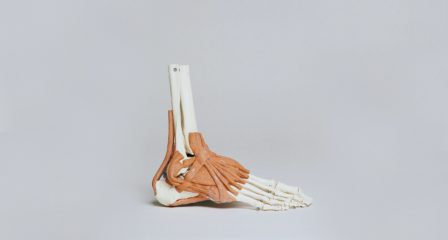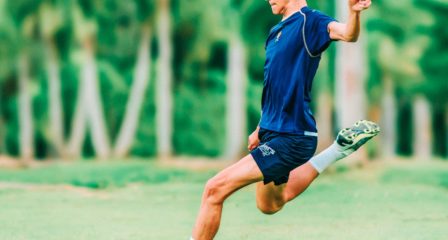Tendinopathy refers to the degeneration and failed healing process of a tendon under stress. Tendinopathy is classified as an overuse injury, as it occurs in tendons that have been overloaded past their capacity for a period of time. At The Injury Clinic, we see it most commonly in the achilles tendons, gluteal tendons as well as the rotator cuff in the shoulder.
Tendinopathy was long thought to be an inflammatory process taking part inside of the injured tendon, and was referred to as tendinitis. More recent research has shown that there are no inflammatory markers in the overused tendon, leading to the condition being renamed to tendinopathy and its unique pain mechanism described as tendinopathic.
Tendinopathy occurs in three separate stages, reactive, dysrepair and degenerative. There are similar symptoms throughout all three stages such as :
- Morning pain in the tendon that improves with movement
- Painful at the beginning of exercise but “warms up” and becomes pain free during exercise and then painful again afterwards
- Local tenderness and there may be a palpable thickening of the tendon
Stage 1: Reactive Tendinopathy
The first stage of tendinopathy occurs after an acute overload through a tendon over a short period of time. This stage can present in pain towards the end of an initial exercise that can be painful at rest, typically worse in the mornings. It can lead to a thickening through the tendon, and patients frequently describe the tendon as feeling ‘tight’. As it is caused by an acute spike in load, if caught early, this stage can be reversed rather quickly if the athlete rests for a short period of time and focuses on releasing the corresponding muscle.
Stage 2: Dysrepair
Tendon dysrepair comes with greater matrix breakdown inside the tendon, with tendon cells becoming more prominent and some ingrowth of blood vessels and nerves. This occurs with more ongoing overload through the tendon, and tends to be more irritable and pain from exercise can come on earlier.
The “warm up” effect of pain coming on at the beginning of exercise and then fading until later on in the session can still occur, but may be more painful and more difficult to ease. This stage, depending on individual factors and how long the tendon has been injured, can take up to 6-12 weeks of appropriate modified load to settle down.
Stage 3: Degenerative tendinopathy
This is the ‘end-stage’ for tendon overuse injuries, with cell death occurring in the tendon. These tendons are highly painful and difficult to exercise with. It typically occurs in an older population but also can affect younger people or elite athletes with long term tendon overload. At this stage, the tendons are at a high risk of rupture.
Degenerative changes are obvious on imaging, and this stage may need surgery to fully recover.
Risk Factors
Tendinopathy can affect any type of person who has an excessive exercise load or inappropriately progresses their level of exercise, but some people are at a higher risk.
Some of the risk factors for tendinopathy are:
- Obesity
- Increased age
- Female; especially perimenopausal
- Decreased tendon strength
- Previous tendinopathy
- Previous steroid use
It is important for people who fit in these categories to be aware of their tendon health and be more mindful of progressing their exercise levels appropriately.
Treatment
The principles of tendinopathy rehab will stay the same regardless of the individual presentation, but the execution/ progression plan may be different depending on the previous exercise load of the patient and their level of pain. Initially, our physiotherapists will attempt to allow patients to maintain their running/ sporting load, most likely at a reduced volume and frequency if able to.
Initially, treatment will focus on isometric exercise through the affected tendon and muscle, where the muscle is contracting while not changing length, taking the pressure off the tendon. This kind of exercise can also have a pain relieving effect initially and over time.
The next stage of rehab is progressing to slow, heavy isotonic exercises that aim to improve strength in the muscle and tendon. The eccentric phase of these exercises should be slower than the concentric phase, as it can help with brain plasticity.
After properly loading the muscle and tendon, the patient can progress to quicker, energy storage exercises and onto sport-specific training. As pain decreases and the tendon’s load capacity increases, returning to sport is possible and the patient can gradually increase their running/ exercise load, back to previous levels.



